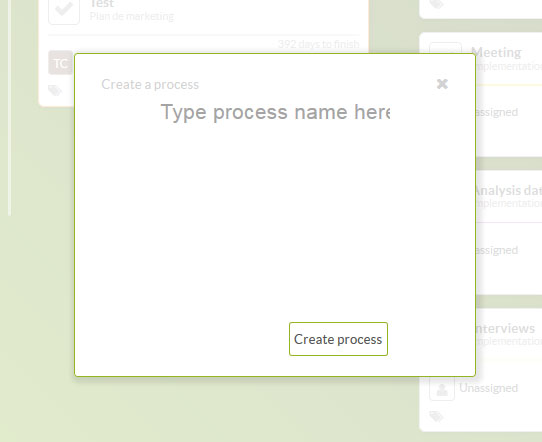A process is a set of procedures to follow in order to obtain a specific result. They follow a series of directives which enable us to achieve our objective. These results tend to be very common or repetitive.
For instance, making a chair requires following a series of steps and applying the necessary resources at a particular time. The combination of all these factors leads to the resulting product: the chair.
The fact is, industrial processes are a clear example of what it means to create a process directly compared to creating a project. In lesson 1 of the free online project management course, Richard Balet explains, additionally, how a process should be managed, compared to a project.
However, it is important to specify when to create a process directly. What situations are right for processes to be run instead of projects?
If you work with planning apps through which you can create a process, everything will be simpler and more effective. Sinnaps, for example, is one of these tools which allows you to save your processes so they can be reused when needed.
When do we create a process directly?
… When your projects tend to be very similar.
… When you obtain the same or similar deliverables from your projects.
… When it can be run by different work teams.
… When it isn’t necessary for the deliverables to be ready on a specific day. In a process, dependencies between activities prevail over placing an activity on a set date. It works this way because the process can be reused. With Sinnaps, however, you can always edit projects created based on a process.
… When you are working on processes with a low uncertainty value.
… When you are using static processes in which changes may represent a serious threat.
How do you create a process directly with Sinnaps?
Once in the Sinnaps Dashboard, you can turn a project into a process. Select Create a process.

At this point, Sinnaps gives us a floating window so we can name the process.

Doing this, Sinnaps will create a process with our name and open the process editor for us.

Now, we’ve got our process!
Next, we have to add more activities, resources, documentation, templates, links and images, among many other features. The more useful information input into the process, the better the valuation, and, therefore, the greater the success among Sinnaps users.
NOTE: The process will remain private until you send it for publication and it passes the validation process. If you publish it, you could help other users and it will help you to gain visibility among the Sinnaps community.

